Kusaya is characterized by its unique aroma and umami. Kusaya is not the name of a fish, but a fermented food made from fish. The smell of such kusaya is intense, but for those who like it, it is delicious. In this article, we will introduce the types of fish used in wedges, the causes of their unique odor, and their nutrition. Kusaya has a long history and is highly nutritious, so even if you have never tried it before, please try it.
KUSAYA ETYMOLOGY MEANING
There should also be an English translation for Kusaya. They based the translation on what Japanese locals understand about the whole word through their language. Kusaya (くさや) in fact, means “stinky”. There is a theory that in the dialect of Niijima, “yo” refers to all fish, and that “smell” plus “fish” turns into “kusaya”. Kusaya is a horse mackerel dip in salt water and dried in the sun. Or in simple terms, it is a Japanese style of dried fish or fermented fish.
WHAT IS INSIDE OF KUSAYA?

For people who aren’t used to smelly food, Kusaya’s smell is rather strong. Kusaya is one of the traditional foods in Japan. It is manufactured only in the Izu Islands, a part of Tokyo prefecture. There are also Monjayaki, Edomae Sushi, Shinagawa Meshi, Chanko Nabe, Fukagawa Meshi, and Bekko Sushi that are part of traditional food in Tokyo.
Kusaya is a dried, salted, and fermented fish in Japanese style. It has a bad smell but has a mild taste. Kusaya is similar to the Surströmming, a fermented Swedish herring and the dried fish in the Philippines called “Tuyo” and “Daing”. Some people love it for its unique scent and its umami that is exquisite. Its secret technique is a fermented saltwater which gives a unique aroma and taste.
ABOUT THE PREFECTURE

Do you know where Kusaya is manufactured from? It is in the Izu Islands where it is also a part of Tokyo prefecture. Izu Islands consists of the traditionally known “Izu Seven.” This Izu Seven are Oshima, Toshima, Niijima, Kozujima, Miyakejima, Hachijojima, and Mikurajima. Although, they also include Shikinejima and Aogashima to be part of it. Izu Oshima is the largest of the Izu Islands. Izu Oshima is best known for being home to the active volcano Mt. Mihara and also the home of Fukagawa-meshi as I previously wrote about it. You can check out its article here.
HISTORY OF KUSAYA
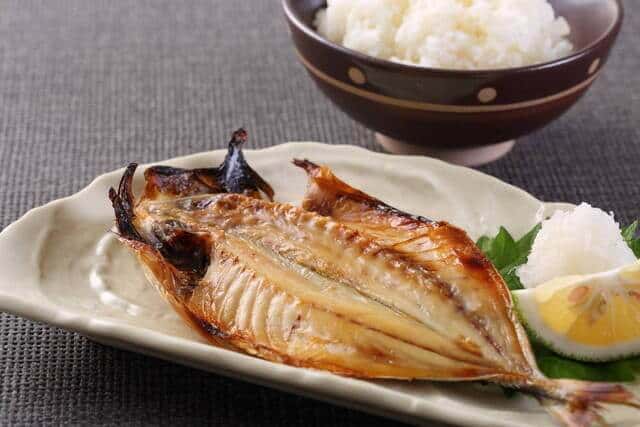
A long time ago, a sea hawk, the size of an eagle, hid the rest of the fish caught in the shade of a rock, and fishermen found and fermented it with seawater. Then, afterward, they decided to eat it. Since the mid-Edo period, salt was especially expensive in the islands. They used it to pay annual tribute on the island, making salt difficult to obtain and valuable. The island, especially on Oshima, also experienced a scarcity of water since ancient times. Due to this, salt-dried fish was served with saltwater and given as a gift to the Edo Shogunate.
Kusaya has this so-called “Kusaya liquid” or referred to as “Kusaya Juice” which they use to soak the dried fish in it. The Kusaya liquid is saltwater use to pickle fish. In the old days, locals used Kusaya liquid as a medicine substitute because it contains natural antibiotics. They usually mixed it with gastrointestinal medicine then they will apply it on wounds to make it a disinfectant. They eat Kusaya during those times for private use or as a supply on the island. During that time, locals brought some Kusaya to Edo, and it seems that there were fans of it among the Edokko. Afterward, Kusaya became a popular dish.
KUSAYA RECIPES

Kusaya is a dried fish that is famous as a special product of the Izu Islands. In terms of the Kusaya recipes, let’s first talk about what type of fish the locals used in making it. There are various types of fish they use to make it including mackerel scad, flying fish, and other similar species. They also needed salt water to soak it in for the process of fermenting the fish. Locals called this Kusaya liquid because it is a special technique exclusive only for making Kusaya. However, be aware of the Japanese fermented fish price because it is quite expensive costing upwards to ¥8400. The price itself speaks of the hard work of every manufacturer of Kusaya.
HOW TO MAKE KUSAYA?

Are you curious about how to ferment a fish before it becomes a dried fish? You will learn the Japanese style here in Kusaya. The fish is wash in clear water many times before soaking it in the fermented-brine. This fermented-brine is “Kusaya Eki” (くさや液) or what they sometimes refer to as Kusaya liquid or juice. They soak the fish for 8 to 20 hours to ferment it. The Kusaya liquid will occasionally make bubbles as it’s normal because the fermentation bacteria are active there. Then, wash it with fresh water, and dry it in the sun for about 1 to 2 days. It is best to do the sun-drying process, especially from October to early spring season. The cooking method of Kusaya generally is baked and eaten, but it can be eaten raw. It also goes well with white wine as well as island shochu.
SIMILAR DRIED FISH IN OTHER COUNTRIES
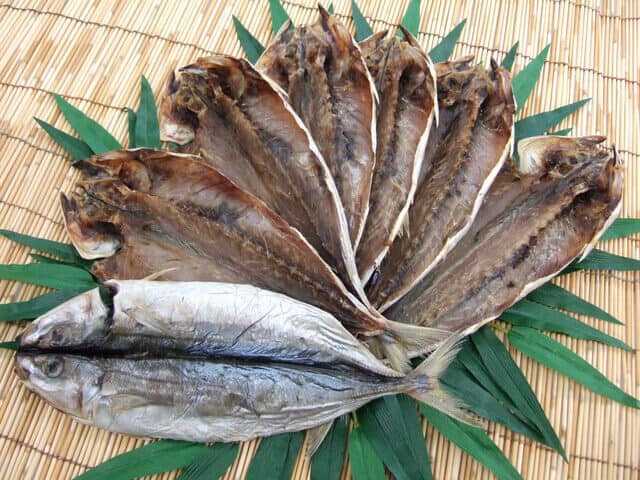
Kusaya is similar to the Surströmming, a fermented Swedish herring and the dried fish in the Philippines called “Tuyo” and “Daing”. Bacalhau is the Portuguese word for codfish and in a culinary context refers to their dried and salted codfish. Ikan asin is a dried and salted fish. It is an Indonesian dish and it is accompanied with steamed rice and sambal chili paste. These are just some of the dried fish dishes in the world.
EATING DRIED FISH IN THE DREAM MEANS WHAT?

Dreaming about eating dry fish suggests that you are trying to fill a void. You are missing something or someone. You are not achieved and the action of eating is there to fill this void. Dreaming about eating dried fish shows that you have difficulty explaining your wishes.
IS DRIED FISH HEALTHY?

Dried fish is indeed healthy it becomes a vital factor in providing high-quality proteins. Dried fish also has healthy fats (including long-chain omega-3 fatty acids), and a unique source of essential nutrients such as iodine, zinc, copper, selenium, and calcium.
HOW LONG DOES DRIED FISH LAST?

It is recommended to cut the fish in a butterfly style and remove its entrail. Afterward, you can do a plain drying under the sun within four (4) days. You can pack it in polythene and it can stay good for six (6) months. If the same packed fish is place in empty air-tight tin containers it will stay good for 11 months. If you have applied a salt in a water decanter for some 6 hours, you can dry it afterward. This will stay good for six (6) months – same as above in air-tight containers.
IS DRY FISH GOOD FOR WEIGHT LOSS?

The main results showed that dried fish was a very rich source of proteins, containing 80-85% protein. The amino acids are measured and compared to the amino acids in eggs. Research says that the proteins in the dried fish were of high quality. It is the single most important nutrient for weight loss and a better-looking body. A high protein intake boosts metabolism, reduces appetite, and changes several weight-regulating hormones.
RECOMMENDED KUSAYA RESTAURANTS
Rito Kitchen

If you want to visit a restaurant-type antenna shop that collects delicious ingredients from remote islands nationwide. Rito Kitchen is the one. Its primary goal is to share the connection of the island that transcends the boundaries of prefectures with the people and customers. Rito Kitchen has different branches. It has on Kagurazaka, Sapporo, Ama store and Remote Island Department Store. It serves exquisite foods and they have intricate plating on them. They serve Kusaya here as part of the menu which is a side dish.
Fukube

Almost halfway between Nihonbashi and Tokyo Station, you can travel back in time on the Yaesu area. The Yaesu area is a corner with an old-fashioned atmosphere. And among them, “Fukube” a restaurant that is loved by many for its sake and side dishes. When you step inside the store, you can feel the passage of time with the amber pillars and ceiling.
Since it is a famous specialty sake store nationwide, the sake is a given. So, what is the recommended side dish? It’s Kusaya. They used blue Decapterus for Kusaya here. This side dish costs ¥700 and one of the popular menus since its establishment. Some customers personally come to the store to eat Kusaya. It is hard to eat it even in Tokyo but you can eat it here.
Hattori Hachijojima Cuisine
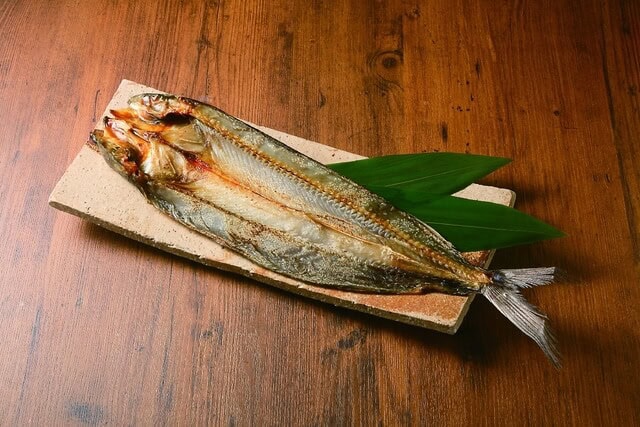
If you are looking for a restaurant near Meiji-Jingumae Station in Tokyo, you can head over to Hattori Hachijojima Cuisine. There aren’t many restaurants in Tokyo that serves Hachijojima cuisine and also, there aren’t many restaurants that focus on ingredients. The shop serves their Kusaya with mayonnaise. They paired it with mayonnaise because some have a habit of smelling it before eating it. Some customers say that those who couldn’t eat Kusaya because of its smell can certainly eat this one.
Aogashimaya

For those from Aogashima who enjoy eating local cuisine, Aogashima-ya is the perfect place for you. It’s on the 2nd floor of a multi-tenant building. And if you don’t know the entrance you can easily notice it because it’s full and it looks like a store where regular customers gather. They serve Kusaya that is unlike what some locals ate at some restaurants, the Kusaya smell here is only moderate. That makes this restaurant great.
CONCLUSION

A lot of people say that it is healthier to consume vegetables and seafood instead of meat. Due to its many contents such as vitamins and minerals, vegetables and seafood are among the top choices of people trying to live a healthy lifestyle. There are many types of vegetables and seafood that one can try. In Japan, there are various kinds of seafood that one can try. The fact that the country is surrounded by bodies of water filled with several sea creatures is a major factor. Locals prepare these types of vegetables and seafood in different ways depending on one’s liking. One of the most notable seafood in Japan would be none other than Kusaya.










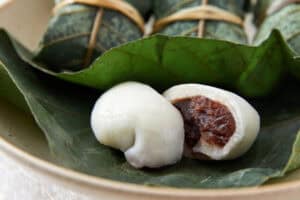




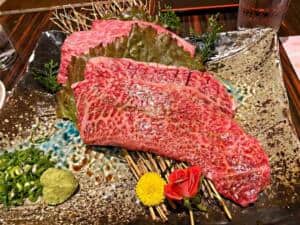
Comments